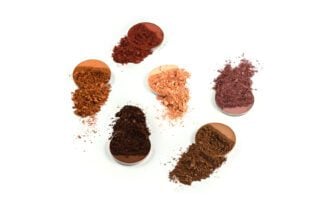
A new law has the potential to help protect Americans from asbestos in talc products. President Biden signed the Modernization of Cosmetics Regulation Act (MoCRA) in December 2022. The law expands the authority of the U.S. Food and Drug Administration (FDA) to regulate cosmetics.
MoCRA is the first major reform of cosmetics regulations since 1938. The law comes at a time of concern surrounding asbestos-contaminated cosmetics on the market.
MoCRA Gives the FDA Authority to Address Asbestos Exposure Risks From Cosmetics
Lawmakers and advocates hope that MoCRA will usher in a new era of safer cosmetics products. The law itself contains new compliance requirements and expands the authority of the FDA over the cosmetics industry.
With MoCRA now the law of the land, the FDA has tools to better address talc asbestos contamination. Talc and asbestos occur naturally near each other and may become mixed when mined. The following provisions can help regulate asbestos in cosmetics products:
- Adverse event reporting: Companies must now report serious adverse events to the FDA within 15 days of notification of the event.
- Ingredient disclosures: Companies are now required to annually register product ingredients with the FDA.
- Mandatory recalls: The FDA can now issue a mandatory product recall if the agency concludes the product will cause serious health problems.
- Safety substantiation: Companies must maintain records adequately proving a product’s safety. The FDA may consider a product dangerous if they do not have adequate safety records.
MoCRA also requires the FDA to issue regulations for standard testing methods to detect asbestos in talc products. The agency must present a proposed rule for asbestos testing by December 29, 2023.
FDA Previously Had Limited Power Over the Cosmetics Industry
Before MoCRA, the FDA had limited power to regulate the $85 billion cosmetics industry. For decades, the industry has fought to keep Congress from making much-needed updates to regulations. The result was a lack of protection for consumers.
The pre-MoCRA legal framework failed to regulate cosmetics companies in many ways, such as:
- All recalls for dangerous products were voluntary.
- Companies did not have to register products with the FDA.
- Companies did not have to report adverse events caused by their products, including asbestos cancers.
- Companies were not required to test the safety of products before selling them.
The FDA has also suffered from a lack of resources to enforce existing regulations. The division responsible for overseeing the cosmetics industry has fewer than 50 employees and a budget of less than $10 million. For comparison, the FDA spends around $200 million regulating food and drugs for pets.
Across the board, the FDA has restricted or banned fewer than a dozen cosmetic ingredients. Other countries with stronger regulations have banned more than 2,400.
The FDA Had Limited Authority to Address Asbestos in Talc Products Pre-MoCRA
One result of the weak pre-MoCRA regulatory framework was that talc products contaminated with asbestos made it to market. As recently as 2019, Johnson & Johnson (J&J) voluntarily recalled 33,000 bottles of baby powder after the FDA found asbestos in the product. Asbestos in J&J’s talc products has been linked to users developing mesothelioma and ovarian cancer.
In the 1970s, J&J played an important role in lobbying for self-regulation of talc products. As a result, companies agreed their products would have no detectable asbestos. However, the definition of “detectable” was left up to the companies.
For the most part, the FDA’s power has been limited to conducting its own tests for asbestos products and hoping producers voluntarily recall products when the agency finds asbestos in makeup. Besides J&J’s talcum powder, the FDA has also found asbestos in:
- Beauty Plus Global makeup products
- Claire’s© makeup products
- IQ Toys children’s makeup
- Justice® makeup products
MoCRA will hopefully prevent dangerous asbestos-containing cosmetics from entering the market.
The Fight to Protect Consumers From Asbestos in Cosmetics Does Not End With MoCRA
MoCRA becoming law is an important step in preventing asbestos exposure from cosmetics products. But the passage of the bill itself is not the end of the story. The FDA must still issue adequate regulations for asbestos testing.
Moreover, the law only authorizes increasing funds for cosmetics regulations. It does not include any actual money for regulation. It will be up to Congress to provide the appropriate funds.
Advocates will continue to fight to make sure the FDA receives adequate funding and creates strong regulations. They will also continue to push for a complete asbestos ban as the best way to prevent exposure.
MoCRA gives the government the tools it needs to create real change. It is now a matter of using those tools effectively to protect the health and safety of American consumers.




